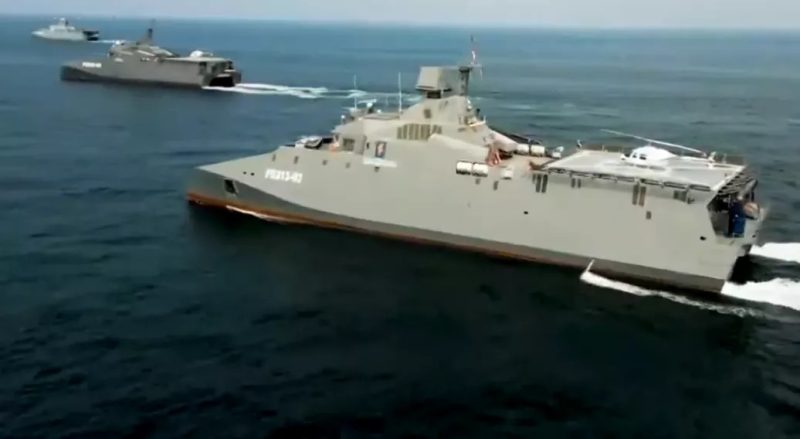
The Islamic Revolutionary Guard Corps’ Navy has taken delivery of two new Soleimani-class corvettes, with the vessels, the Sayyad Shirazi and the Hassan Bagheri, inaugurated at a ceremony in the southern port city of Bandar Abbas on Monday.
The unique new class of warships, named after fallen IRGC Quds Force Commander Qasem Soleimani, constitutes one of the most sophisticated military vessel designs in Iran’s arsenal, featuring a unique, low-observable hull design and equipped chock full of some of the latest Iranian radar, sensor and weapons technology.
The new ships are 65 m long, have a 600-ton displacement and are powered by four Iranian-made diesel engines which allow the vessels to accelerate to speeds of up to 32 knots. The ships can remain at sea continuously for up to 14 days at a time, have a 2,000 nautical mile range, and are capable of operating in moderate to rough sea conditions.
Onboard, the ships bristle with missile and air defense systems, including Iran’s new Navvab vertical launch system for missiles, four 20 mm triple-barreled Gatling guns, a 30 mm autocannon, 16 Sayyad-series SAMs, and six Abu-Mahdi naval cruise missiles.
The ships can carry a combat helicopter and three fast attack boats.
There is some confusion in reporting about the two new vessels in Iranian media. The Shahid Soleimani, the lead ship in the series, was commissioned in September 2022. In January, the IRGC commissioned an outwardly similar-looking but smaller warship, the Abu Mahdi al-Muhandis (named after the Iraqi Popular Mobilization Forces commander who was assassinated by the US alongside Qasem Soleimani in 2020 in Baghdad). The latter warship, not to be confused with the Soleimani-series, is 47 meters long, can accelerate to speeds up to 37 knots, and is a separate class of military vessel.
WATCH: Iran's IRGC Navy receives two new warships, the Martyr Sayyad Shirazi warship and Martyr Hassan Bagheri warship pic.twitter.com/vZWxH80ypN
— Press TV (@PressTV) February 19, 2024
Source: PressTV, Sputnik News

